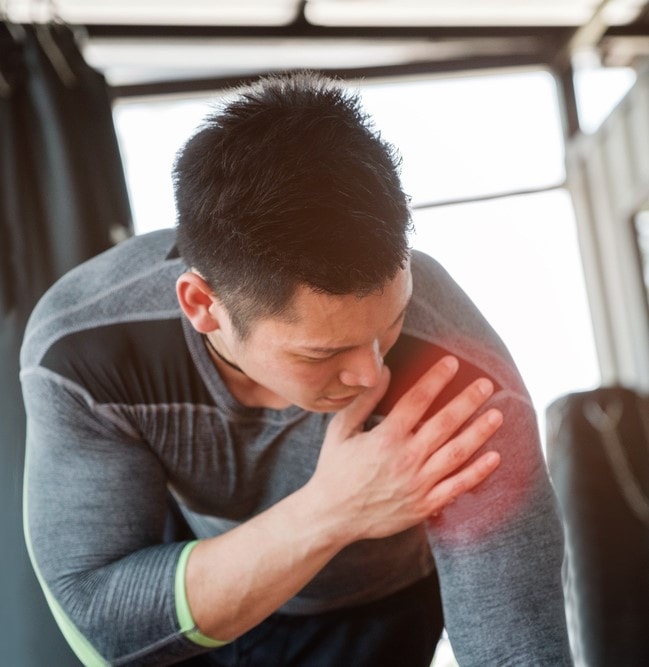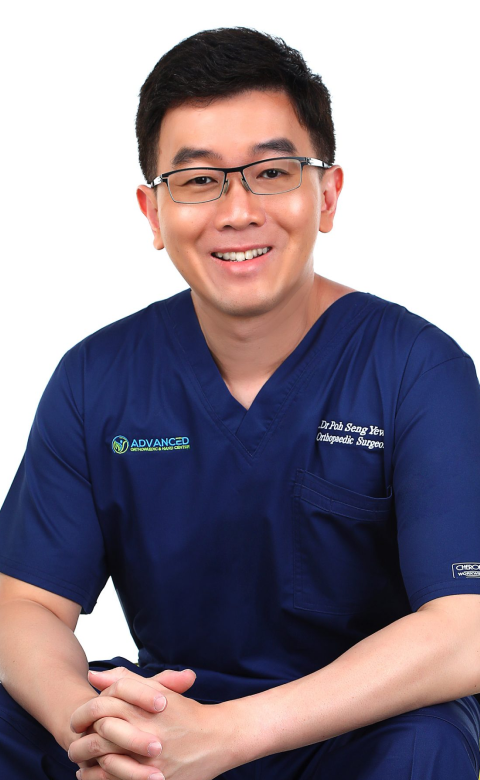Schedule An Appointment Within 24 Hours
Are Your Symptoms Affecting Your Quality Of Life?
Consult our MOH-accredited shoulder specialist for a comprehensive diagnosis of your condition & a personalised treatment plan.
Dr Poh Seng Yew has over 18 years of experience specialising in complex shoulder arthroscopy, open shoulder reconstruction and shoulder arthroplasty.
Are your shoulder pain symptoms affecting your quality of life? Consult our MOH-accredited shoulder specialist for a comprehensive diagnosis of your condition & a personalised treatment plan.
MBBS
MRCSEd
MMED (Ortho)
FRCSEd

The shoulder is a complex joint susceptible to various complications and disorders, often resulting from injury, overuse, or age-related wear and tear. Here are common shoulder conditions to watch out for.
Individuals experiencing shoulder complications and disorders may present a range of symptoms that signal the need for medical evaluation.
The assessment of shoulder conditions requires a structured diagnostic approach to accurately identify the underlying cause and guide appropriate treatment.
A thorough history taking is the initial step, where patients describe their symptoms, onset, duration, and any inciting events.
Your shoulder specialist may also perform a comprehensive examination, assessing pain, range of motion, joint stability, muscle strength, and the presence of any deformity or swelling.
In cases where diagnostic imaging is inconclusive, arthroscopy can be a tool for direct visualisation of the interior of the shoulder joint.
These tests may be indicated to diagnose nerve involvement or compressive neuropathies related to shoulder disorders.
Blood tests can help identify or rule out systemic conditions that might contribute to shoulder pain, such as rheumatoid arthritis or infection.
Management of shoulder conditions may often begin with non-surgical treatment strategies. These options aim to alleviate symptoms, improve function, and facilitate healing.
When non-surgical interventions fail to provide relief or in cases of severe shoulder conditions, surgical options may be considered.
Arthroscopy |
A minimally invasive procedure where small incisions are made to repair or remove damaged tissues. Commonly used for rotator cuff repairs, labral tears, and removal of bone spurs. |
Rotator Cuff Repair |
Surgery to repair torn tendons in the shoulder. This can be performed arthroscopically or through a traditional open procedure. |
Shoulder Joint Replacement (Arthroplasty) |
Replacement of the shoulder joint with artificial components. Total shoulder arthroplasty is for patients with severe arthritis or complex fractures, while hemiarthroplasty replaces just the head of the humerus. |
Capsular Release |
This surgery is for treating frozen shoulder, involving the release of tight portions of the joint capsule. |
Acromioplasty |
The removal of a small piece of the bone from the acromion to relieve impingement symptoms and allow for more space for the rotator cuff. |
Ligament Repair |
Reconstruction or repair of ligaments to address shoulder instability and prevent recurrent dislocations. |
Labral Repair |
Surgery to fix tears of the labrum, the cartilage rim around the socket of the shoulder joint. |
Fracture Repair |
Fixation of broken bones in the shoulder using pins, plates, or screws. |
Schedule An Appointment Within 24 Hours
Consult our MOH-accredited shoulder specialist for a comprehensive diagnosis of your condition & a personalised treatment plan.
Effective prevention of shoulder complications involves a multifaceted approach aimed at minimising risk factors and maintaining shoulder health.

MBBS
MRCSEd
MMED (Ortho)
FRCSEd
With over 20 years of experience, Dr Poh Seng Yew is an orthopaedic surgeon specialising in hip, knee, shoulder and elbow surgery, sports medicine, and trauma surgery.




Weekdays: 9.00am – 5.00pm
Saturdays: 9.00am – 1.00pm
Sundays and Public Holidays: Closed
Your symptoms shouldn’t affect your quality of life or disrupt daily activities. Reach out to our friendly clinic staff today & schedule a consultation.
Acute shoulder pain can resolve by itself without medical treatment. Rest, ice, and over-the-counter pain relief may be sufficient. Persistent or worsening pain requires medical evaluation.
Surgery may be considered if conservative treatments are ineffective, for severe injuries, or when there is significant impact on daily activities and quality of life.